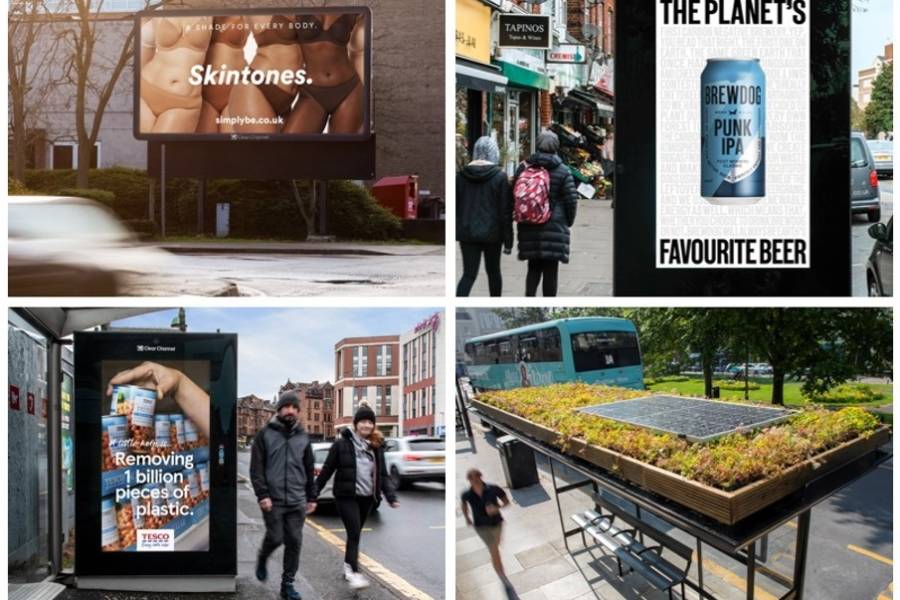Three Out of Home trends set to continue in 2022
07 Jan 2022 / News, Opinions, Our People
2021 was an interesting year in Out of Home with the return of a life outdoors and brands looking to be a part of this significant cultural moment. As we turn our attention to 2022 our Client Partner Colin Horan wanted to look back on the year, and picks out three trends that emerged from the last 12 months that are here to stay.
By Colin Horan, Client Partner, Bauer Media Outdoor
IRL to URL – Online brands embracing OOH
One of the biggest impacts of the pandemic has of course been the growth of e-commerce, which has impacted a number of categories from fashion to food, and 2021 in particular we really saw the battle for the online consumer take place Out of Home.
When some of the major high-street stalwarts like Debenhams and Gap closed their stores and became online pure-players, Out of Home ensured their physical presence remained. Similarly, we saw the emergence of the rapid-delivery grocery market last year with brands like Getir, Gorillas, Zapp and Weezy going head to head with Amazon and some of the major supermarkets. For online-born brands like these, Out of Home gives them a real-world presence that not only garners trust but can crucially provide them with mass-reach to drive that all important mental availability.
For retail, OOH was traditionally seen as a proximity footfall driver for stores. By using data and the flexibility of digital OOH, advertisers can target specific audiences at the right time and place, which has a much greater impact when driving omni-channel sales. A 2021 study from Dentsu proved that OOH increases online actions by +63%, so I’m expecting more and more online brands to continue to turn to OOH to drive IRL to URL this year.

The Public Declaration
Research we carried out at the beginning of last year suggested that 77% of consumers felt that brands had a duty to behave in a socially responsible way, and 2021 certainly proved to be a year in which brands took this advice on board.
We became inundated with briefs from clients looking to use OOH as a way of making their public declaration around important social issues, from inclusivity to sustainability. If a brand is putting a message in the public domain for everyone to see, then there’s a strong chance it must be true and OOH’s reputation as a trusted channel has made it the go-to for brands to tell the world what they stand for.
Additionally, the need for advertisers and agencies to make media choices that reflect the values of their brand has become more prevalent. Therefore, our purpose to be both a platform for brands, and a platform for good becomes more important than ever. Projects like our ‘Bee Bus Stops’, which help increase biodiversity in the community is a great example of how the Out of Home industry can have a positive social impact, and in turn gives advertisers a trusted platform to deliver their message.

The Power of the Special Build
Whilst the future of OOH is digital, the demand for the classic special build has never been higher. Not only are brands looking for that high impact stand out, but marketers are starting to see the potential of alignment with social media when creating exciting out-of-home experiences.
BBC’s Dracula campaign in late 2019 was perhaps what sparked this trend, but since then we’ve seen a plethora of brilliantly creative OOH executions that have gone on to have huge social media success. In some instances, many of us will only ever see the campaign on social, but knowing that it lives in the real world makes the impact so much greater.
Marmite’s series of special builds for the launch of their Dynamite Chilli variant was one of my favorites, and worked perfectly on social, but a great example of a brand that focused their efforts on creating a truly engaging experience for the consumer in the real world was from Hendricks, who build a series of bus-shelter dominations that tapped into all the senses. Out of Home has become the home of creativity once again.

I'm expecting 2022 to be another exciting year in Out of Home, and I'm looking forward to seeing how advertisers up their game once again. Accompanying the trends I've listed above we'll see the continued digital transformation of the channel, with real-time audience data and automation playing an increased role (not to mention the QR code 😉). Here's to a great 2022.
SHARE POST
PRESS ENQUIRIES





